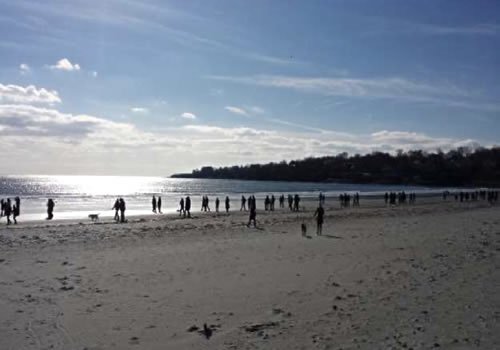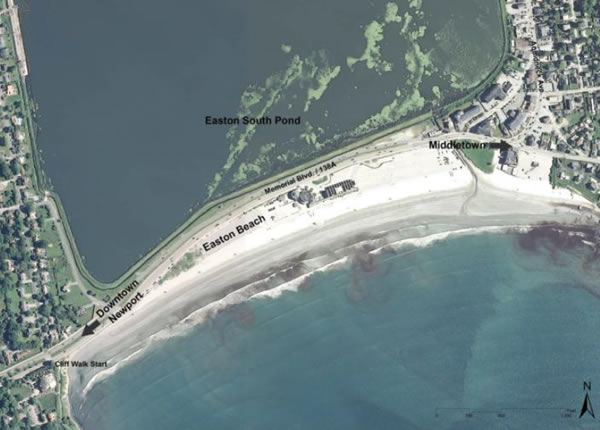Find it and Fix it: Citizen Science Combats Citizen Problems
June 2020
Clean Ocean Alliance (COA), a Rhode Island-based nonprofit, formed in 2006 after a parking ban to restrict beach accessibility stirred two local surfers to contact both Newport Police and the City Council to improve the situation as pipe ruptures and combined sewer overflows led to beach closures well into the summer. Marty Grimes and Dave McLaughlin organized 27 other surfers to discuss the importance of water quality in their community. United by their shared interest in maintaining year- round beach accessibility for the public, the group resolved to increase the frequency of local water quality monitoring to better understand when unsafe conditions exist.

Water quality at Easton's Beach has been an ongoing problem, influenced both by the aging infrastructure of the adjacent public drinking water reservoir and the increasingly developed surrounding watershed. The beach, known locally as "First Beach", is located directly across the street from Easton Pond, which is one of nine drinking water reservoirs for Aquidneck Island maintained by the City of Newport. The pond is surrounded by a berm that essentially causes a large moat along the side, and this moat is a source of pathogens on the beach. Identifying and reducing potential pathogen sources to the beach has been a complex problem and despite $12 million of combined investments by the City of Newport and Town of Middleton, closures have continued. Several fixes have been tried and more continue to be sought to solve the problem. For example, in 2014 the City and Town tried using ultraviolet (UV) disinfection to treat pathogens in water from the moat when storms led to at least 0.25 inches of rainfall. Unfortunately, water in the channel was routinely re-contaminated (see aerial photo of channel below), and COA water quality sampling revealed that Easton's Beach was still experiencing elevated pathogen levels. This finding means that more must be done to treat pathogen sources entering into the beach during dry weather too.
Motivated by these results, COA fostered a partnership between the City of Newport, Town of Middletown, and Rhode Island's Department of Health to identify pathogen sources during both dry- and wet-weather events, facilitate the development of pathogen remediation plans, and suggest improvements in stormwater conveyance systems to reduce beach closures.
COA's Find It and Fix It program, funded in part by SNEP, trained a robust group of volunteer monitors to help out, including engineers, educators, health professionals, scientists, college interns, and retired professionals. Their additional participation increased COA's weekly water and sediment sampling effort from 12 to as many as 36 samples per week, culminating in the collection of 244 samples from June to December 2016!
Sampling took place in Newport Moat, Easton's Stream, and Easton's Beach, bringing visibility to the importance of reducing stormwater runoff, combined sewer overflows, and pollutant discharge into coastal waters. The study identified roughly ten potential pathogen sources, including Newport Moat, Wave Avenue pumping station, Bailey Brook, Esplanade Outfall, Cliff Walk Outfalls, nearby parking lots, and general sources of domestic and wild animal waste. Inspired by their findings, COA proposed several remediation efforts spanning education, public participation, and both short- and long-term pathogen reduction plans. Suggestions included examining the effect of land uses around Easton's Pond, increasing year-round water quality monitoring capacity, implementing rain barrels and rain gardens throughout the developed watershed to reduce stormwater, and constructing wetlands for enduring, natural water processing.
The project really gained traction when residents who know the area became involved. Increased awareness of the issue has now led to discussions about ways that residential green infrastructure and citizen-led solutions like pet waste removal, smart fertilizing, reduced lawn size and changes in pesticide use might help. The organization hopes that their efforts will inspire more citizens to get involved in local water quality efforts and encourage more use of citizen science efforts like this by municipal and state research and scientists in the future.
Please direct any questions to COA co-founder Dave Mclaughlin ([email protected]).

